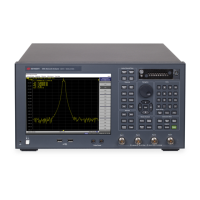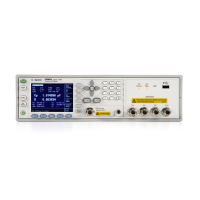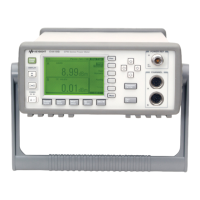E5071C
248
• The calibration mixer must be reciprocal. The term "reciprocal"
means the magnitude and phase of the conversion loss are
equal both in the forward and reverse directions. The forward
conversion loss occurs during the measurement of the output
signal at the IF port while inputting measurement signals into
the RF port. In contrast, the reverse conversion loss occurs
during measurement of the output signal at the RF port while
inputting measurement signals into the IF port.
• For precise calibration, the conversion loss in each direction
must be less than 10 dB using a calibration mixer and IF filter in
combination. Exceeding 15 dB of the conversion loss in any
direction may deteriorate the calibration accuracy significantly.
Characterizing procedure for calibration mixer (with IF filter)
The E5071C has a pre-installed VBA macro (Vector Mixer Characterization)
for characterizing the calibration mixer with an IF filter.
Storage Folder VBA Macro (Project Name)
D:\Agilent MixerCharacterization.vba
Executing Characterization of Calibration Mixer
1. Setting Stimulus Conditions
Set the stimulus conditions for the channel you want to calibrate. For the
necessary steps, refer to Setting Stimulus Conditions.
You must also set the external signal source in advance. For the necessary
steps, refer to Setting External Signal Source.
2. Running VBA Macro
1. Full 2-port calibration is recommended for characterizing the
calibration mixer with the IF filter, although 1-port calibration is
also available. This is because using full 2-port calibration
simplifies the evaluation procedures, which are described in
Overview of vector-mixer calibration . For detailed information
on full 2-port calibration, see Full 2-Port Calibration.
Load the VBA project and then run it.
1. Press Macro Setup.
2. Click Load & Project.
3. Specify D:\Agilent\ MixerCharacterization.vba for the file name in the
Open dialog box and then press the Open button.
4. Press Macro Run to run the macro.

